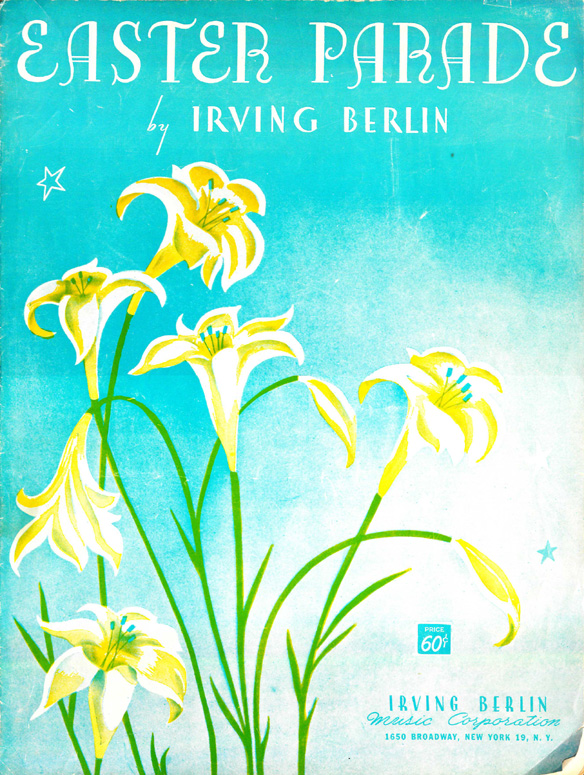We’re celebrating new publications, exciting exhibitions, and the festive holiday season with another round of digital jigsaw puzzles. This collection of images highlights a few winter favorites as well as more »
Tag: Holidays
Our Resource Description department is busy throughout the year cataloging books and other materials for our 21 branch libraries. This holiday season our catalogers shared a few delightful items that were recently cataloged, using the hashtag #12DaysofCataloging. Below is a round-up of all the titles we featured on social media. Get ready for lots of pop-up books, castles and winter themes! These fabulous books were compiled by staff members Heidy Berthoud, Lesley Parilla and Julia Blakely.

“Easter Parade” is still a popular song- lots of little kids today know this old tune from their musical animal toys. You might know the lyrics and tune to sing along with the first 2 lines of the chorus of “In your Easter bonnet, with all the frills upon it…” Written by Irving Berlin in 1933, the song was also the basis of the iconic 1948 movie musical starring Judy Garland and Fred Astaire. The song was introduced by Marilyn Miller and Clifton Webb on Broadway as part of the musical revue As Thousands Cheer (1933), in which musical numbers were strung together on the thematic thread of newspaper headlines and the lives of rich and famous people.
An entry into this magical season can be gained through the Historia de gentibus septentrionalibus (History of the Northern Peoples) by Olaus Magnus, first published in Rome in 1555. It is a work greatly valued by Smithsonian curators and researchers and other scholars, since the author – a true Renaissance man – wrote down his geographical, anthropological and naturalistic observations of a land unknown to much of Europe of the time. In the present day, the book’s vivid descriptions and woodcut illustrations offer a wealth for modern study: early shipbuilding, fishing and whaling practices, meteorology, agriculture and mining techniques, warfare, daily occupations and religious practices of the Scandinavian peoples. It also provides wonderful images for what we have come to perceive as traditional for the winter holidays.
Please enjoy our annual holiday video (below). We’ve had a wonderful year here at the Smithsonian Libraries and we wish you all very merry holidays and a Happy New Year! more »
Just in time for the holidays, we’ve scoured our collections to find you some appropriate imagery to go along with that beloved carol, “The 12 Days of Christmas”. This post was written and compiled by Mario Rups, cataloger in our Resource Description unit. We hope you enjoy the delightful selection!
Our friends at The Biodiversity Heritage Library asked this question in social media last year and offered up vibrant, joyful portraits of the amaryllis instead. But one commentator declared more »



